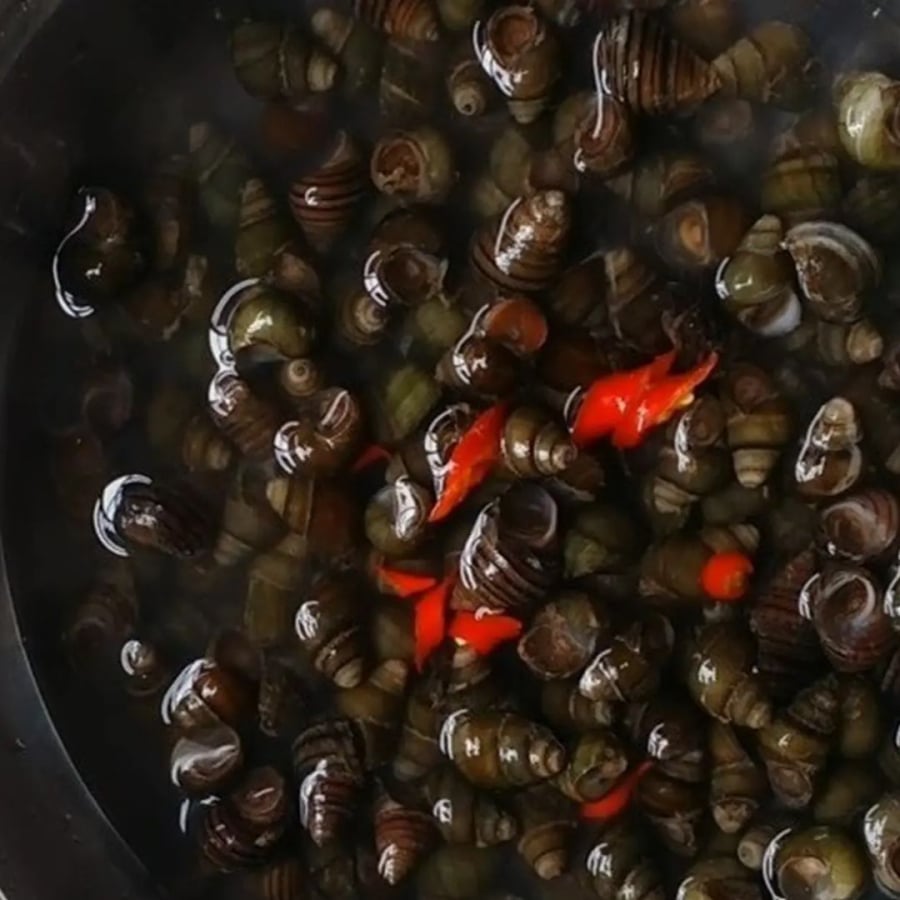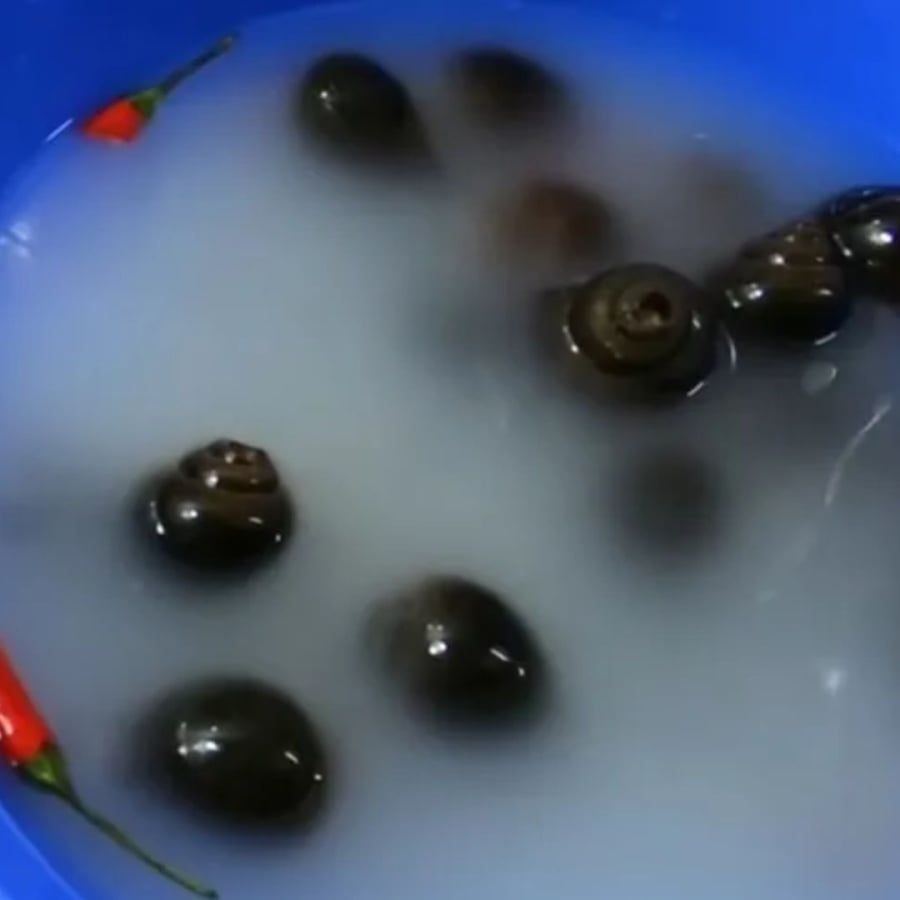Snails are a delicacy loved by many Vietnamese for their robust flavor, ease of preparation, and versatility in cooking methods such as boiling, stir-frying, grilling, or making salads. However, if not cleaned and soaked properly, this dish can not only lose its delicious taste but also develop an unpleasant odor, become slimy, or even pose potential health risks due to contamination. The following article will reveal simple tips for soaking snails to ensure they release any mud, sand, and slime, resulting in a clean and odorless delicacy that anyone can easily prepare at home.
1. Why is it important to soak snails correctly?
Snails typically live in ponds, streams, or muddy areas, and their intestines can contain mud, dirt, and impurities. If not thoroughly cleaned, they will emit a foul odor and have a slimy texture, which can also affect your health. Proper soaking helps with the following:
– Ensuring the snails expel mud, sand, and impurities from their bodies.
– Eliminating unpleasant odors, slime, and bacteria present in the snail’s intestines.
– Maintaining freshness, tenderness, and food safety.

2. Choosing fresh and good quality snails before soaking
Selecting live and fresh snails is extremely important before soaking. Opt for snails that are still alive, with their mouths closed or slightly open but immediately closing when touched. Fresh snails have a characteristic mild odor and do not have any strange or rancid smells. Avoid choosing dead snails, those with peeling shells, a putrid odor, or decayed intestines.
3. Effective folk methods for soaking snails
Here are some effective traditional methods for soaking snails that have been trusted by many:
a. Soaking snails in rice washing water
Method: Soak snails in rice washing water for about 3-4 hours or overnight.
Effect: The slightly alkaline rice washing water helps soften the mud and stimulates the snails to release impurities more quickly.
Tip: Adding a few slices of fresh chili to the soaking water will startle the snails, encouraging them to release mud faster.

b. Soaking snails with vinegar and chili
Method: Mix water with a little vinegar and a few slices of chili, then soak the snails for about 1-2 hours.
Effect: Vinegar neutralizes the foul odor, while chili stimulates the snails to release slime and mud quickly.
Note: Avoid using too much vinegar to prevent the snails from partially “cooking,” losing their crisp texture.
c. Soaking snails with fresh lemon juice
Method: Squeeze 2-3 lemons into the water and soak the snails for 1-2 hours.
Effect: The acid in lemons effectively eliminates the foul odor and cleanses the slime.
d. Soaking snails in diluted salt water
Method: Soak the snails in diluted salt water (not too salty) for 2-3 hours.
Advantages: Salt water helps eliminate bacteria, removes slime, and ensures a thorough cleaning of the snails.
4. Tips for boiling snails to enhance flavor and reduce odor
To further reduce any unpleasant odor and enhance the flavor of the snails after soaking, consider the following tips when boiling them:
– Add a few crushed lemongrass stalks, ginger slices, or lemon leaves to the pot to neutralize the odor and enhance the fragrance.
– Avoid covering the pot tightly during boiling, as this allows the unpleasant odor to escape, and it also keeps the snails crisp.
– Boil the snails over high heat for about 5-7 minutes, and turn off the heat as soon as the snail shells open to prevent overcooking, which can make the snails tough.
5. Tips for storing fresh snails if you’re not preparing them immediately
If you’re not preparing the snails right away, you can store them in the refrigerator for 1-2 days to maintain freshness. Avoid keeping them for too long, as they may die and spoil. Do not soak snails in water for extended periods, as they can die and produce a foul odor.
If you wish to store them for a more extended period, you can parboil them and then freeze them, but this will affect their texture and taste.
6. Additional notes on snail preparation
– Avoid direct contact with snails during the soaking process if you have open wounds on your hands.
– Refrain from vigorously pounding live snails, as their intestines may rupture, making it difficult to clean them thoroughly and increasing the risk of bacterial contamination.
– After soaking, rinse the snails with cold water 2-3 times and thoroughly scrub the mouth area to remove any remaining slime and dirt.
Properly soaking snails not only helps eliminate sand, slime, and odor but also contributes to creating a delicious, appealing, and safe dish for the whole family. Apply these tips, such as using rice washing water, chili, vinegar, or lemon, to save time on preparation while ensuring a clean and tasty delicacy. Whether boiled, stir-fried, or grilled, clean snails are the foundation for flavorful and satisfying meals!






























